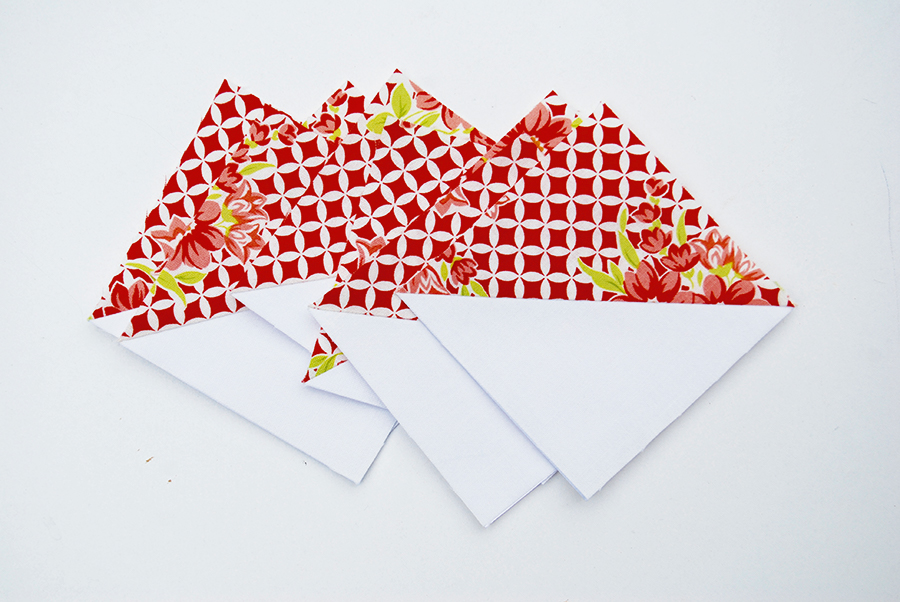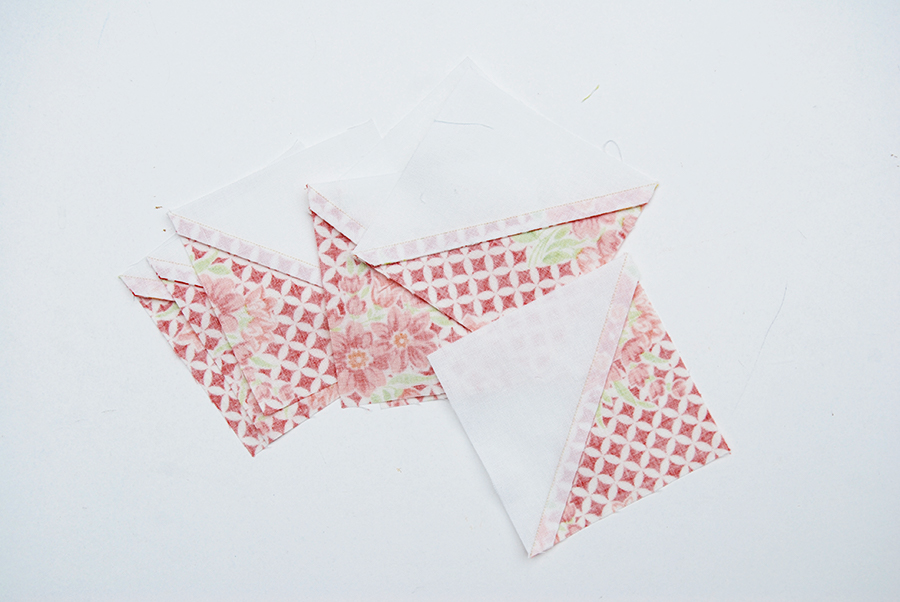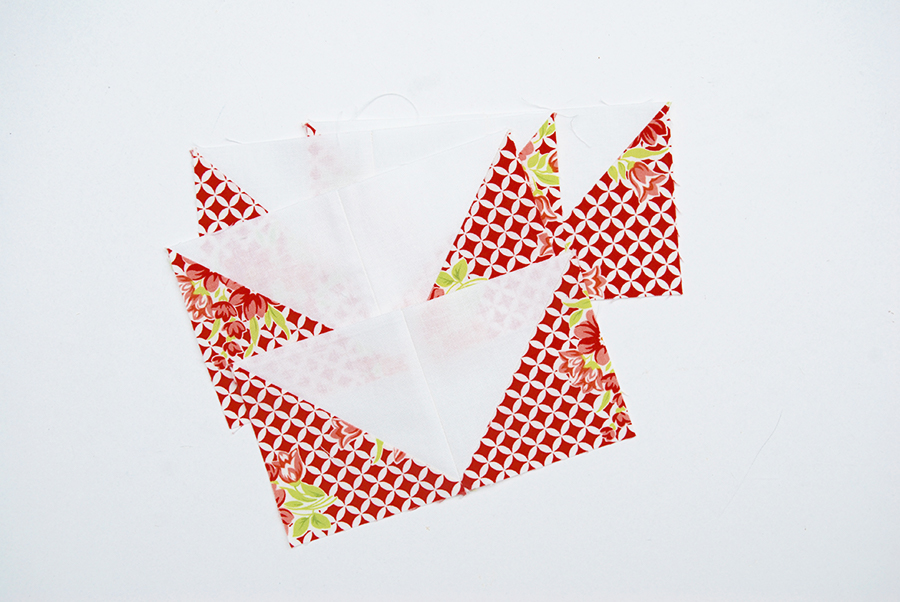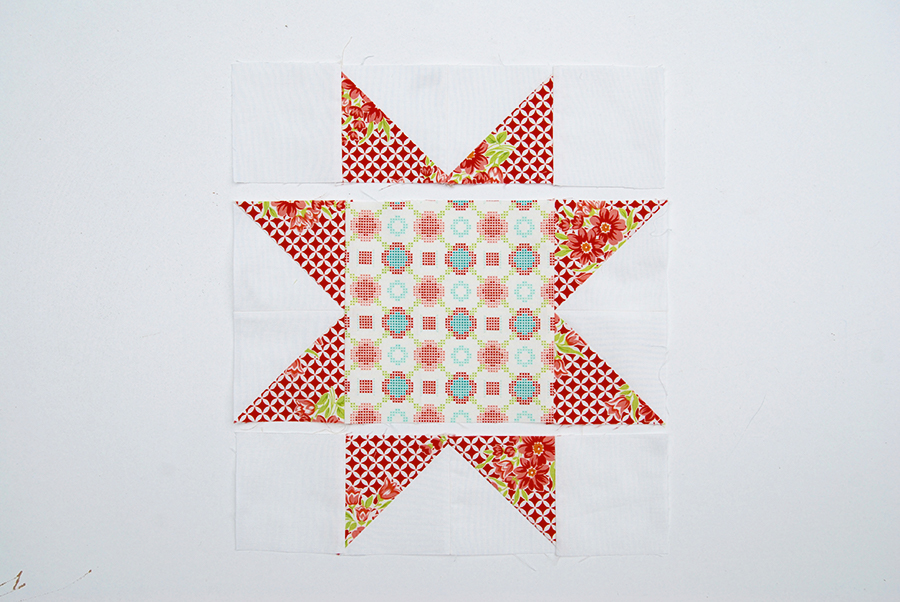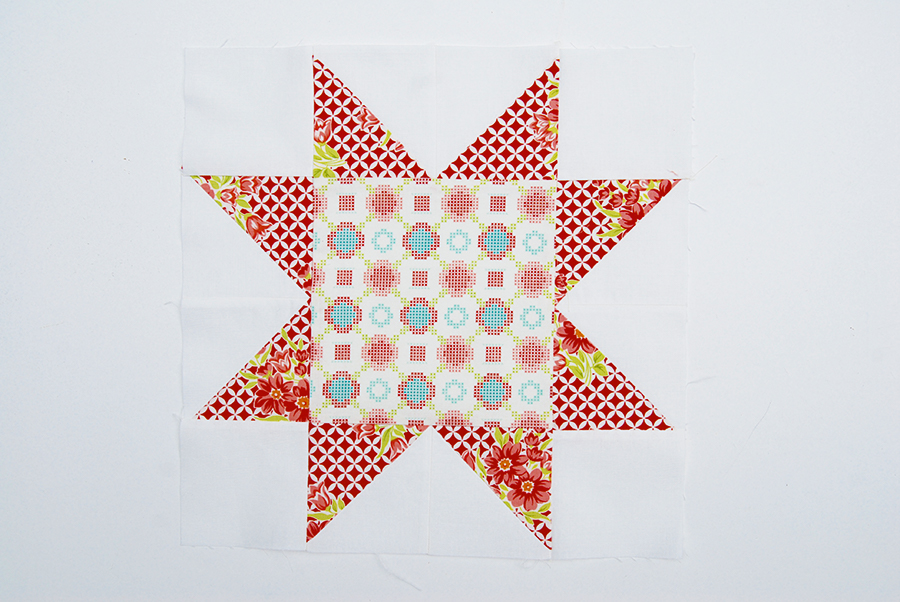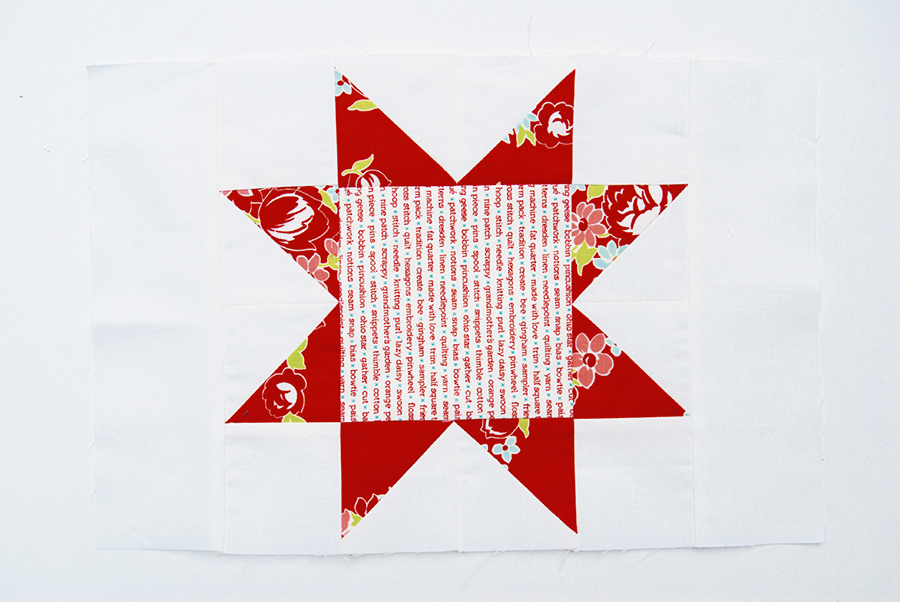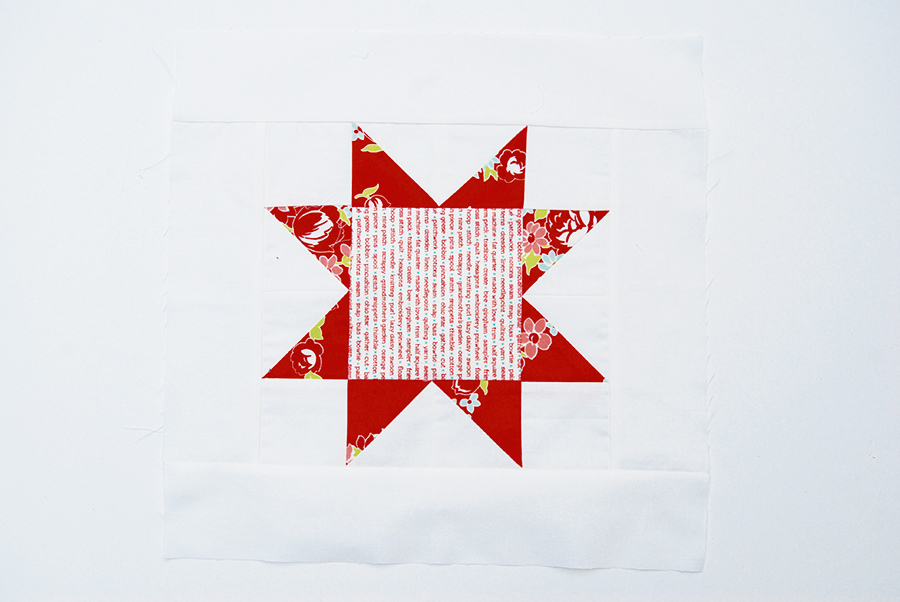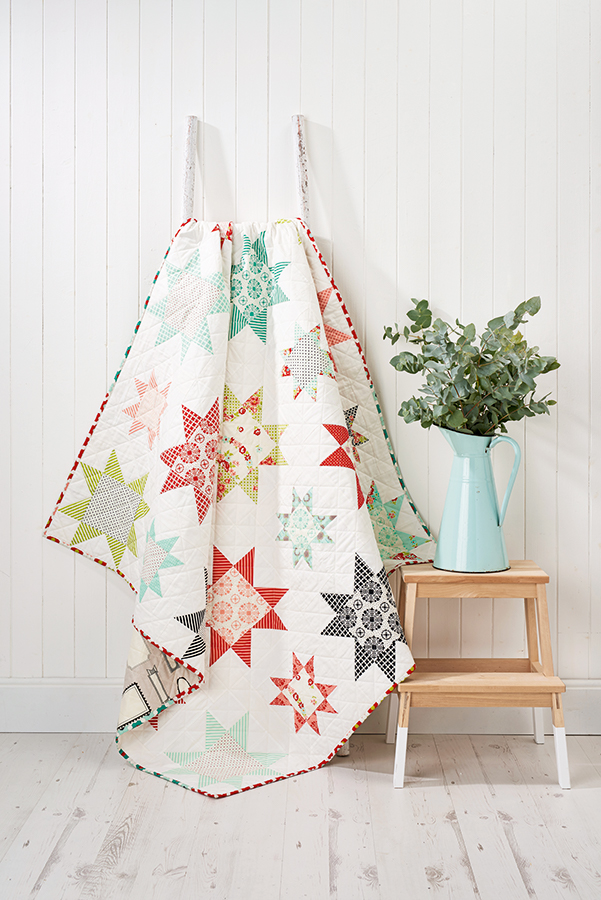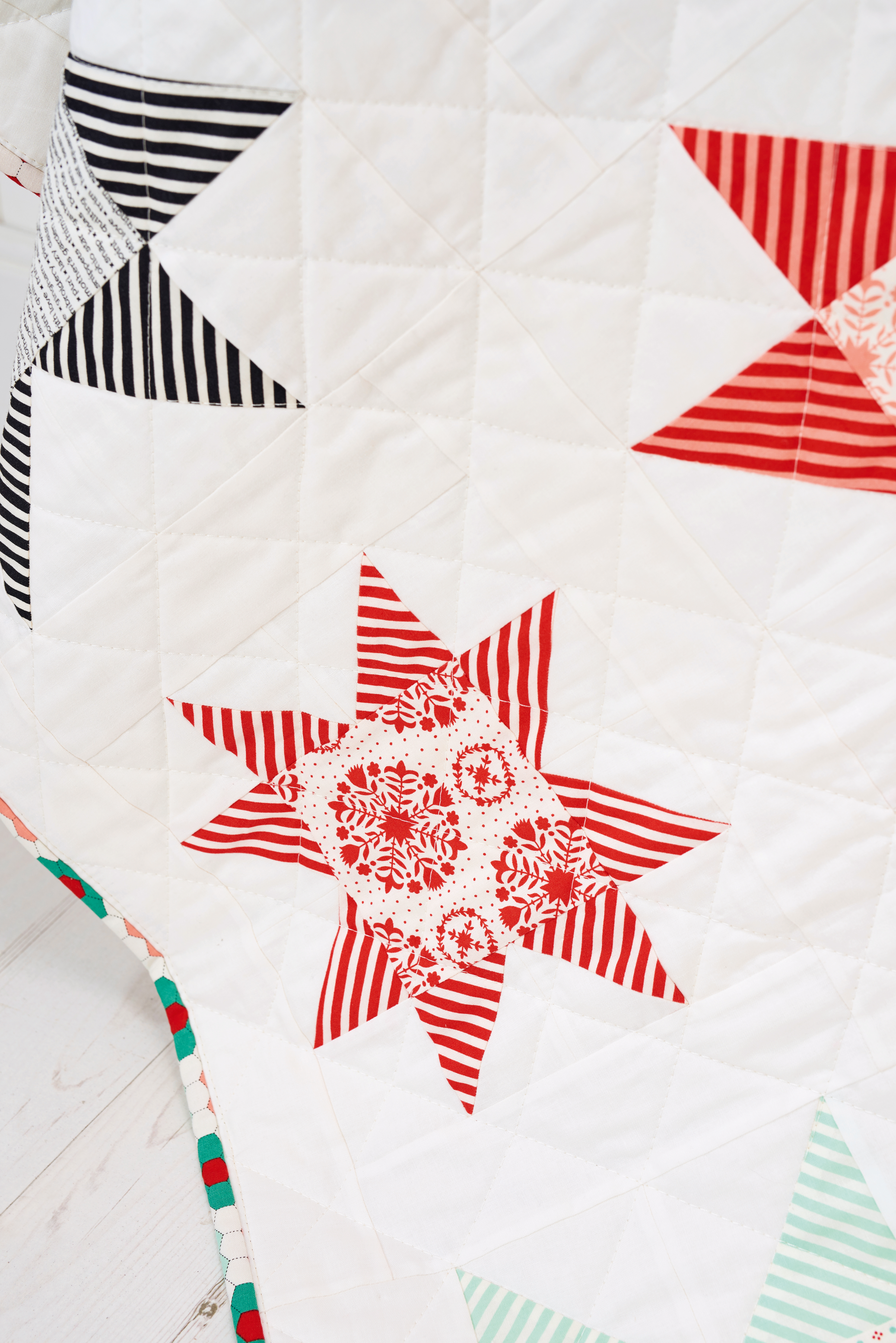If you’ve never given quilting a go before, this Nordic-feel project is a great place to start. Not only does it tap into this winter’s trend for all things Scandi, it’s also a beautiful heirloom make. Start it now and give to someone special as a thoughtful (and seriously impressive) Christmas gift.
Made using the traditional morning star quilt block in fresh, contemporary fabrics, you’ll piece together triangles and squares using basic quilting techniques that are easy to master. Lynne used a Handmade by Bonnie and Camille for Moda Fabrics fat quarter bundle for the top, back and binding, then Robert Kaufman Kona Cotton in Snow for the background. But, you can mix and match fabrics of your own if you prefer, or switch up the colour scheme – we like the idea of using a selection of solid brights against a wintery grey base.
This project was created by Lynne's for Mollie Makes magazine – for more easy-make craft projects and creative inspiration, subscribe to Mollie or click here to find out more.
Materials
- Background fabric, 2.5m (23⁄4yrds)
- Scrap fabrics, 2.6m 7 (2 /8 yrds) total or 12 fat quarters
- Backing fabric, 3.5m (33⁄4yrds)
- Binding fabric, 0.5m (1⁄2yrd) or 2 fat quarters
- Wadding, 1.7m (68") square
- Paper for templates
- Templates from issue 71 which you can download here
- Quilt chart
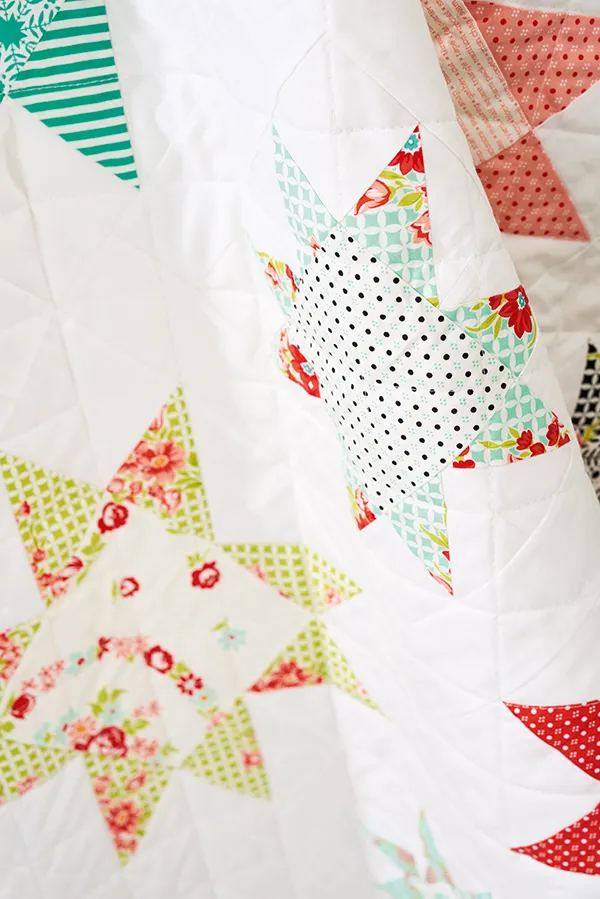
Contemporary patchwork quilt pattern chart
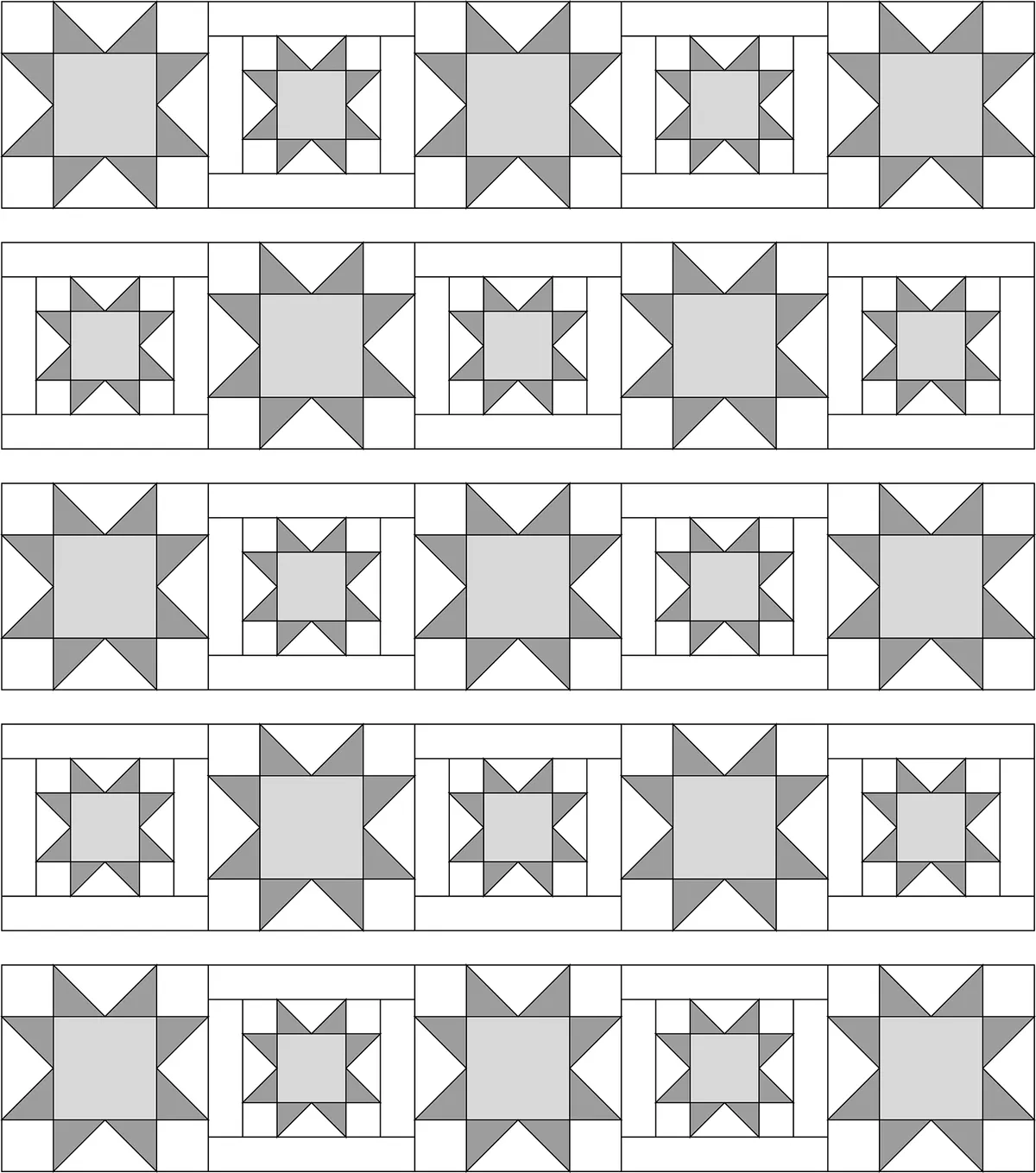

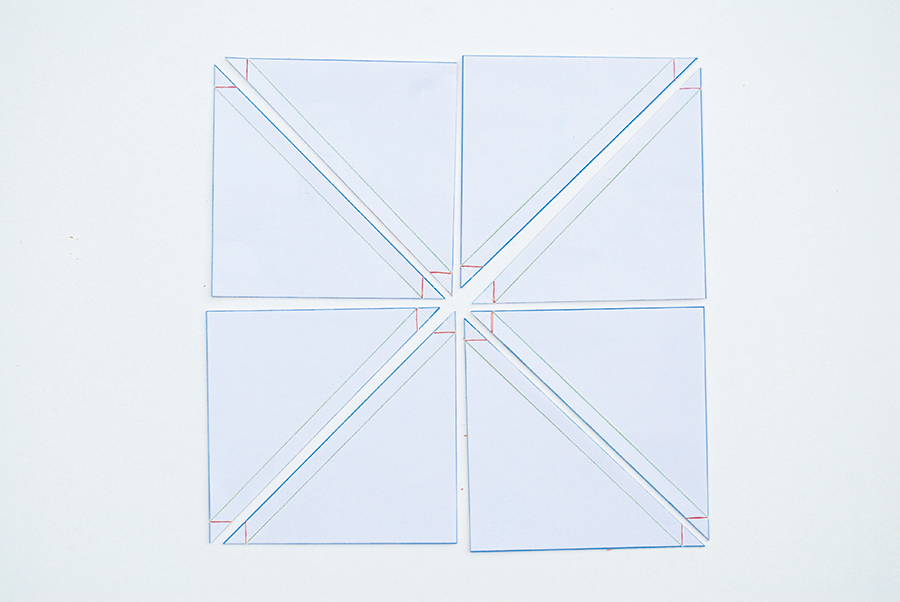
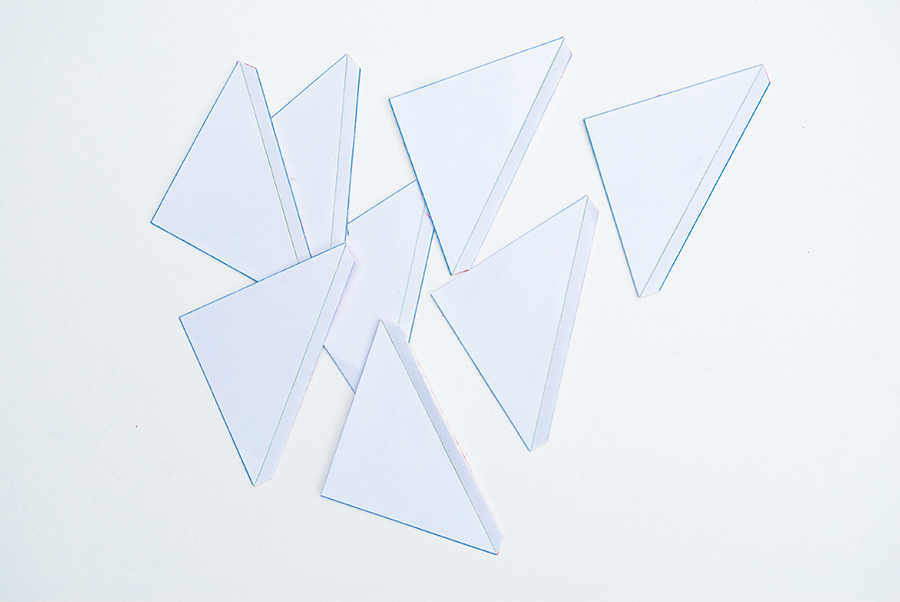 Trim any excess paper and fabric and cut along the blue lines, through both the template and fabric, using a rotary cutter. Trim along the red lines to clip the corners, then press the HSTs open – do this before removing the paper to get a straighter seam.
Trim any excess paper and fabric and cut along the blue lines, through both the template and fabric, using a rotary cutter. Trim along the red lines to clip the corners, then press the HSTs open – do this before removing the paper to get a straighter seam.